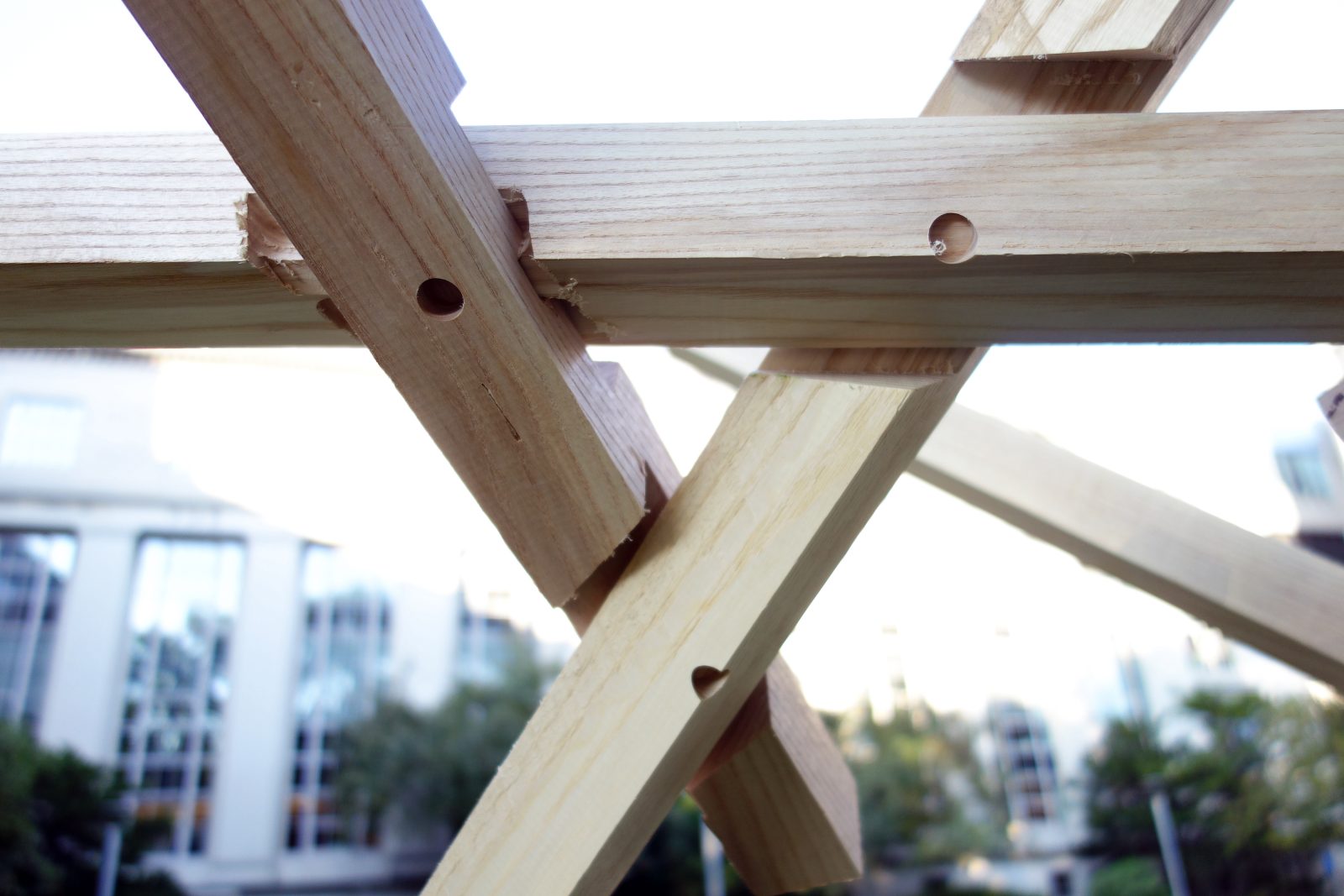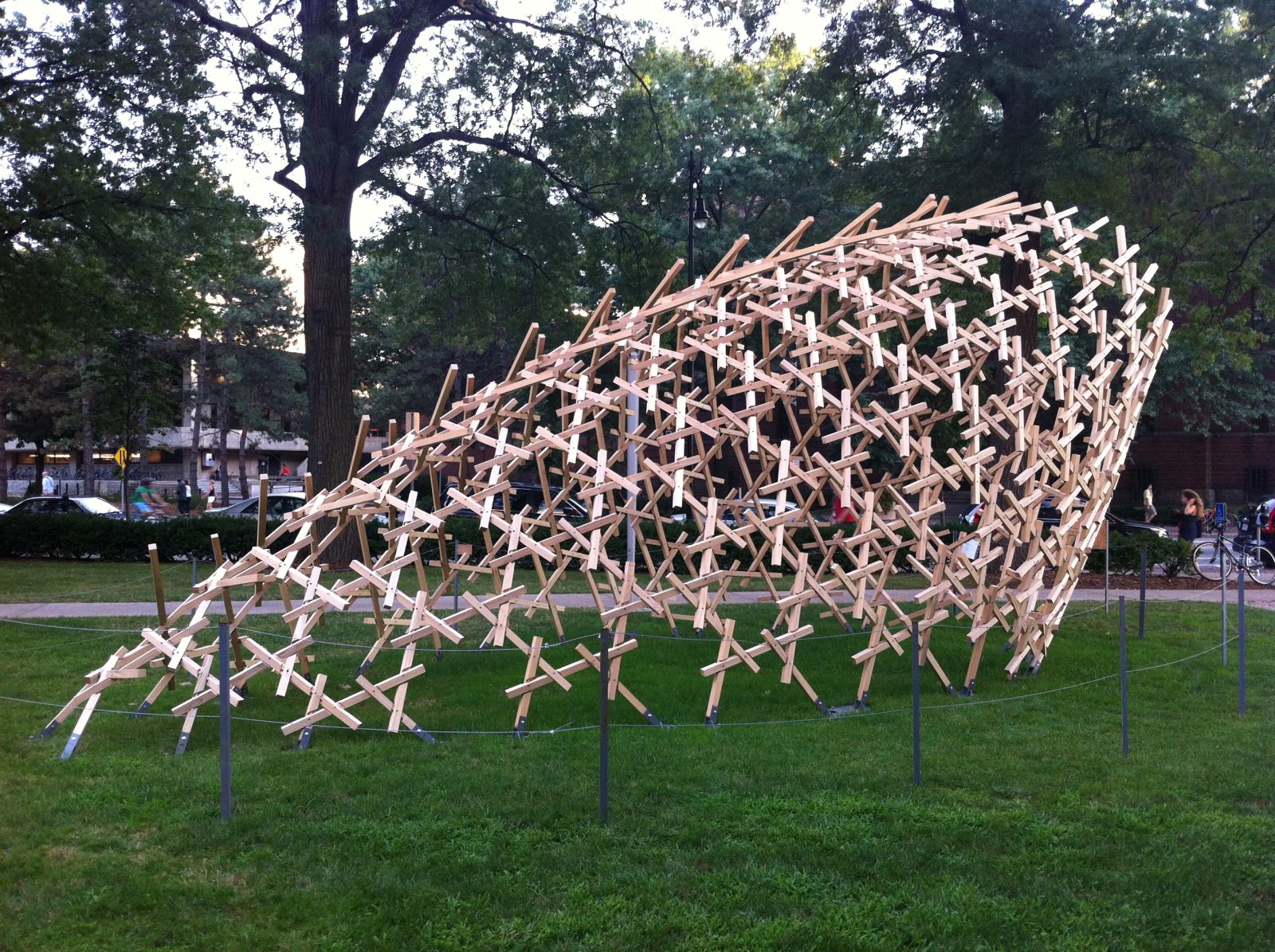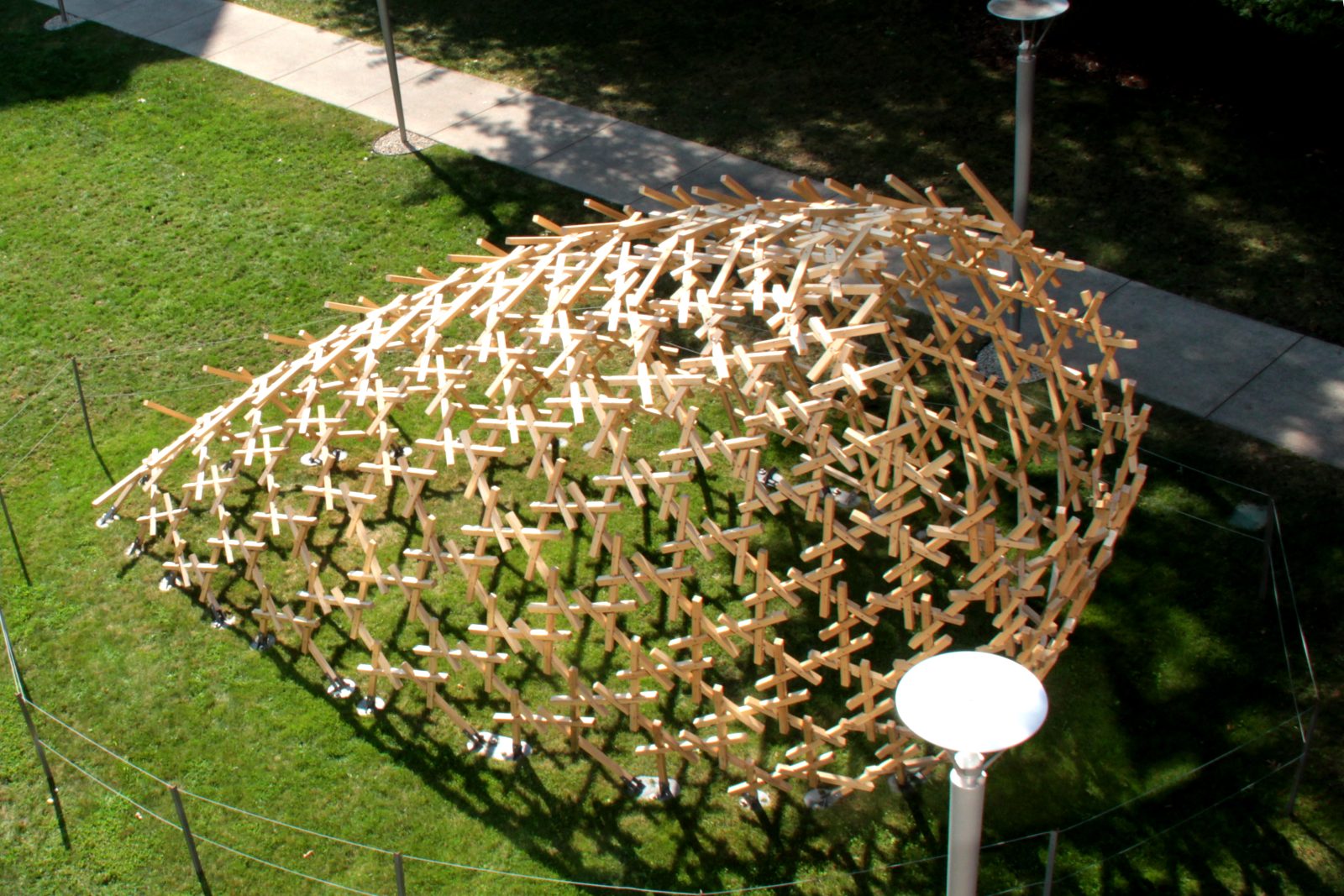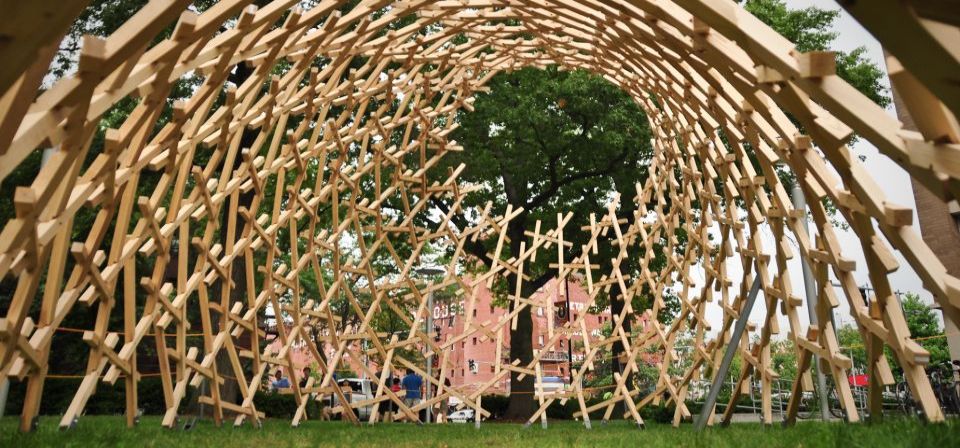Cambridge, MA
Massachusetts Institute of Technology, Framework Pavilion
Scope/Solutions
The Framework Pavilion, a temporary installation at the Massachusetts Institute of Technology (MIT), was designed by Architecture graduate students, Robert White, David Moses, Barry Beagen, and Trygve Wastvedt. The students describes the themes of the installation to reflect those that recur in contemporary fabrication: parametric design, mass customization, automated toolpath generation, encoded assembly instruction, and digitally-driven manufacturing processes. The pavilion itself consists of approximately 500 American Ash boards, each cut with four lap joints, that are assembled to create a curved lattice. SGH consulted on the structural design for the project.
The geometry of each board and its joints was unique, but based on parametric rules such that there was consistency within the assembly method and structural behavior. The team did not prepare drawings, but instead employed a direct-to-fabrication process and developed a labeling system to define each board’s location and the location of adjacent boards. The students fabricated the boards with a 4-axis CNC router and assembled the pieces on site.
SGH initially consulted on various forms and construction materials for the early design concepts. As the project developed, SGH provided full structural design services that included the following:
- Consulting on the stability and strength of the overall reciprocal frame structure, a type of self-supporting structure without central support
- Evaluating joint behavior and detailing the CNC-cut joints
- Recommending an assembly sequence with consideration of stability during the construction process
- Evaluation of non-typical design loads
Project Summary
Key team members





